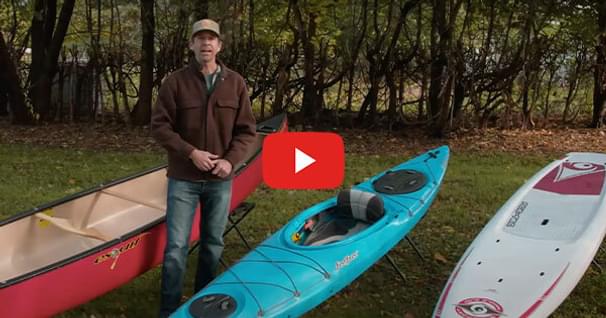Basic Canoe Part Identification
We're using the Old Town Appalachian to demonstrate the parts of a typical canoe.
Bow vs. Stern
The bow of the canoe is the front, and can easily be determined, by noticing the seats. The bow seat, has much more space between the front of the canoe and the seat. Whereas the stern seat is located much closer to the back of the boat.
Hull vs. Deck
Another basic part of the canoe is the hull, or the bottom of the canoe. This is what is going to make contact with the water when you are paddling.
As you move to the top of the canoe, you'll see the deck plate. This is designed to protect the top of the material, and can also double as a handle. Many of today's canoes now integrate a separate handle into the deck plate, which is one of the ways you can carry a canoe on land.
Gunwale
The gunwale runs the length of the canoe from the stern to the bow, protecting the canoe's materials. These can be made with vinyl, wood, and even aluminum materials. It can also provide a mounting surface to mount things like the seats, thwarts, and yolks.
Canoe Seats
There are many types of seats available, such as webbing, which uses a wood frame, and nylon webbing. There is also cane, using a wood frame. There is also molded plastic seats, which can offer things such as a backrest for support.
Lets discuss seat parts in more detail. Most seats are mounted using bolts, dowels, and nuts. Dowels are spacer pieces between the gunnel and the seat. Dowels come in different sizes, which allow seats to be mounted at different heights for the best center of gravity.
Thwarts
Thwarts are mounted to the gunnels to provide added structural support for the canoe, so it retains its shape. There are multiple types of thwarts, such as a standard straight thwart. Then also the center portage yoke, which one can use to carry the canoe solo.
Summary
Now to recap our basic canoe part identification:
- bow
- stern
- the hull of the canoe
- the deck
- handle
- gunnel
- seats
- seat dowels
- thwart
- portage yoke
~Get the BWCAW Tee~
With over 1,090,000 acres of wilderness area, the BWCAW is a paddler's paradise.
Related Articles
Ken Whiting answers the big question for new paddlers - Do you go for a canoe, a kayak, or a stand up…
By changing how you edge and balance your boat you can increase your stability and adaptability. Using…
After the raw dimensions of length, width and depth, canoe performance is determined by hull shape.…
In this video, we're going to look at five kayaking tips that will make you a better paddler or at least…




